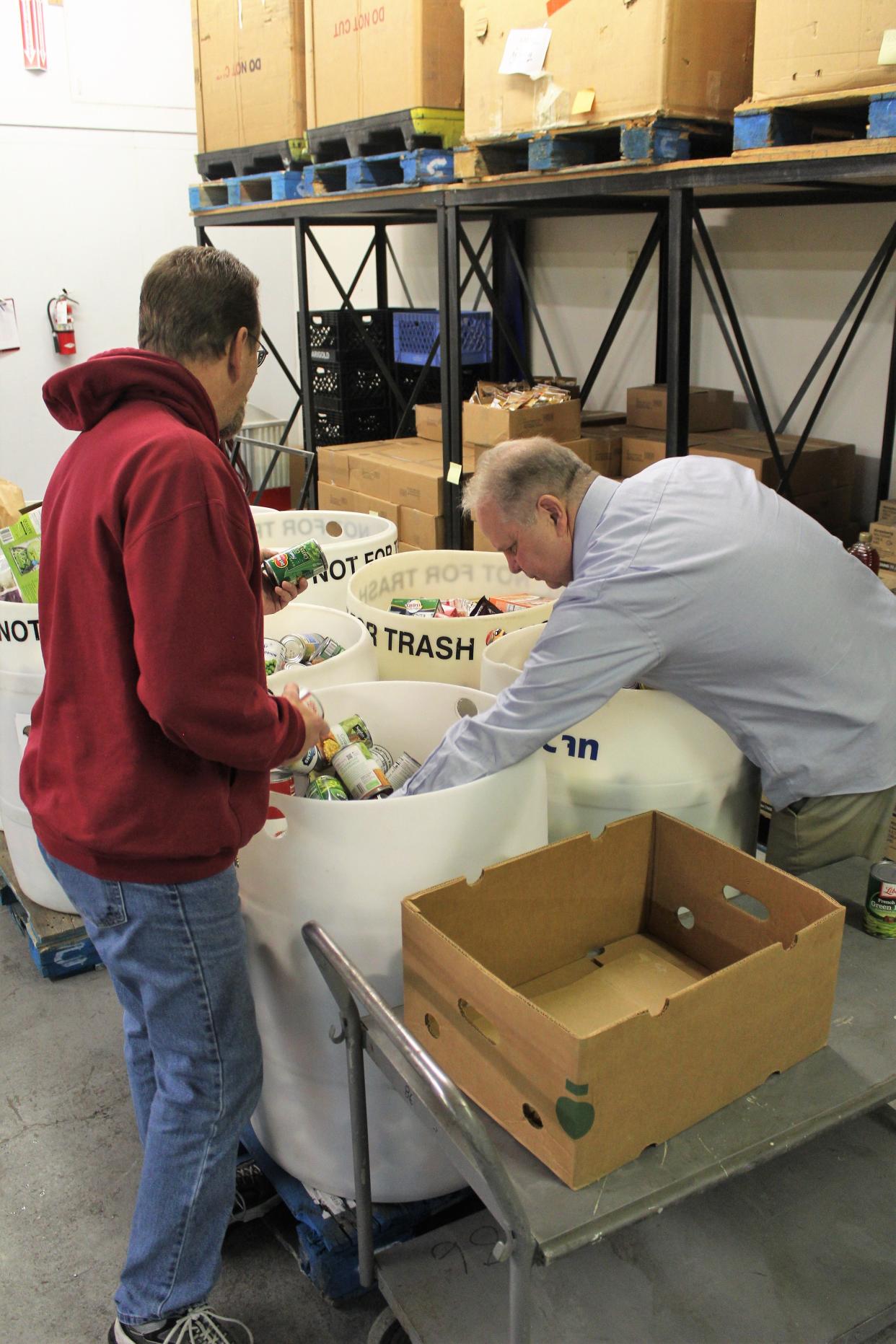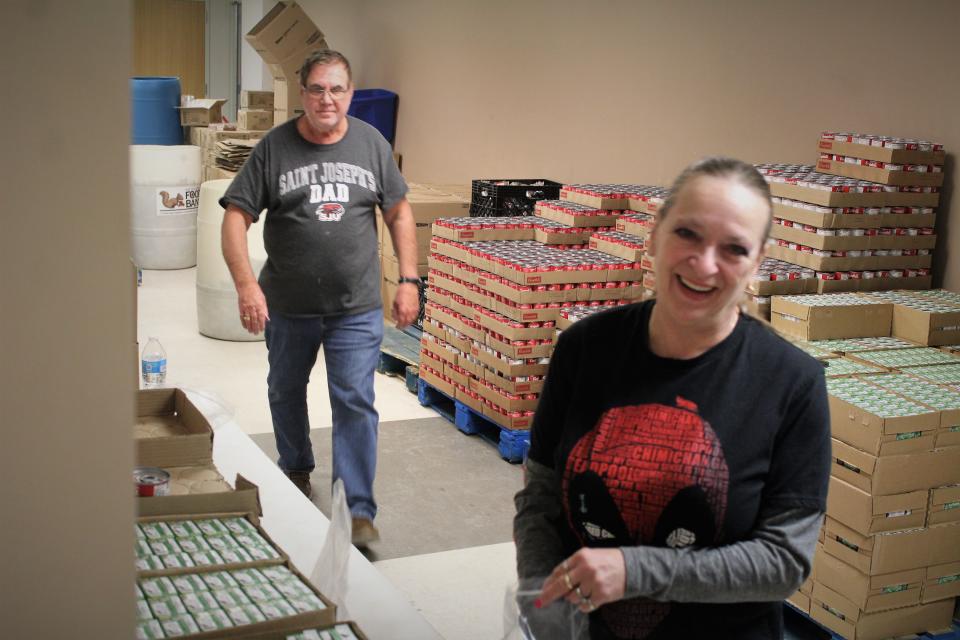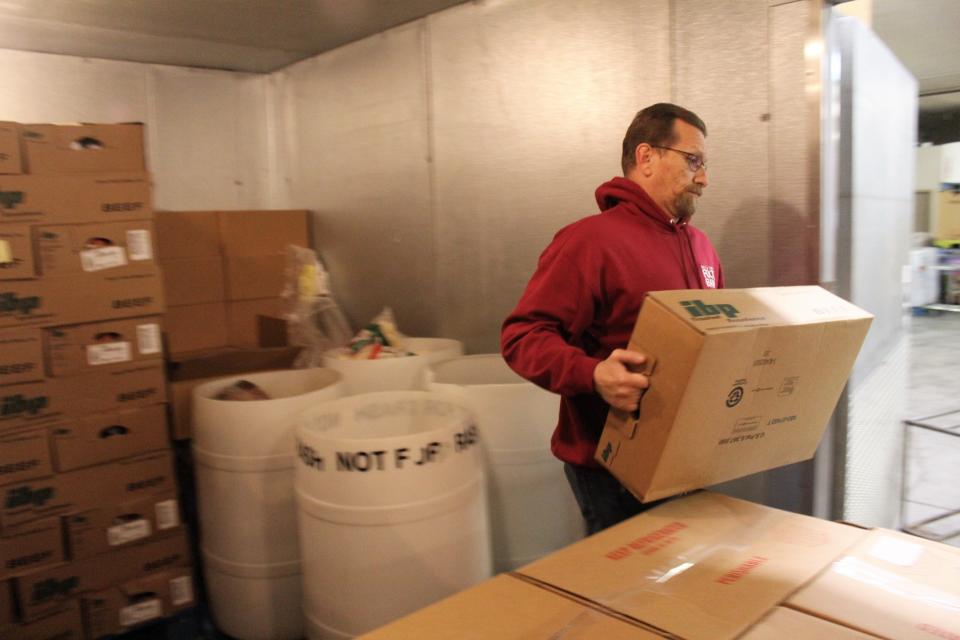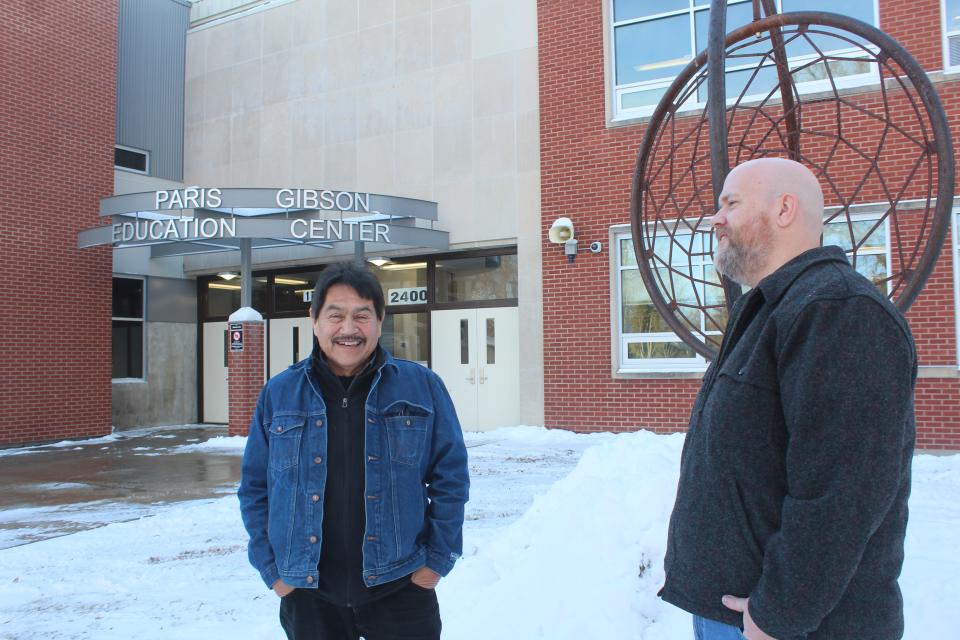Great Falls sees 70% increase in food assistance requests as prices soar at grocery stores

It would be easy to conclude that the scourge of hunger and homelessness across the country and in our communities eased somewhat after the worst of the COVID-19 pandemic had passed. That, with a return to something resembling normalcy, families living on or over the edge of poverty would have an easier time accessing the resources they need to keep a roof over their heads and food on the table. In fact, the opposite is true.
Soaring food prices, a shortage of affordable housing and recent declines in charitable giving bode poorly for at-risk and displaced families in Great Falls. In case after case, public service organizations across Great Falls are reporting a sharp increase in the number of requests for food assistance.
Most notably, the Great Falls Community Food Bank, which supplies more than 70 local organizations with either free or low-cost canned goods, meats, vegetables and baked items, has seen the demand for food increase by more than 70% over the last nine months.
“We’re seeing things that we’ve not seen in at least a decade,” said Food Bank Executive Director, Shaun Tatarka. “It started at the end of winter and in the early spring of 2022. All the agencies that come in and get their food here started taking more and more and more. They were coming in and taking two or three times what they normally would take.”
“We didn’t see it coming, and it has not let up,” he added.
Community Food Bank records show that from April to September 2022 the food bank distributed more than 381,000 pounds of food – almost 158,000 pounds more than over the same period last year. The Food Bank is currently on pace to dispense well over 900,000 pounds of food by the end of the 2022 calendar year.
At the same time contributions to the Food Bank’s winter mail-in campaign are down by 23%, a nearly $13,000 deficit that may be hard to make up.
“Are we in dire straits?” Tatarka asked rhetorically. “Absolutely not, but if 2023 is exactly the same way 2022 was, we’ll probably have to start looking at dipping into our financial reserves by summer.”

The situation is not unique to Great Falls or Montana. A recent report from USA Today documents how food banks across the country are struggling this holiday season as inflation creates a “perfect storm” of increased need and declining donations.
“The effects of an unforgiving pandemic, persistent inflation, and a sense of uncertainty about the future can be seen on the faces of families who come to the food bank hungry,” said San Antonio Food Bank's president Eric Cooper.
Earlier this year the U.S. hunger relief organization Feeding American reported that over 150 of its 200 food banks reported increased or steady demand for services as food prices increased. More than 40% of those food banks reported running a budget deficit in their attempt to have enough food.
Tatarka explained that the Great Falls Community Food Bank acts as a central food collection and distribution center that supplies food to the various “frontline” service agencies that get that food to the people in the community who need it.
“We serve the agencies,” he explained. “They can come here and buy their food much, much more cheaply than the next cheapest place in town. In a lot of cases our stuff is free; bakery items, milk, things that are about to expire – we don’t charge for that.”
A fourth to a third of that food is channeled through area church pantries. Equally important are organizations like the Boys and Girls Club, FISH, Salvation Army, Meals on Wheels, the Cascade County Pre-release Center and Toby’s House.
While the Community Food Bank does take in large numbers of food donations, it also purchases enormous quantities of food to fill the gaps between what they have and what they lack.
“There’s a staple of things that we just have to have,” Tatarka said. “It’s not written in stone, and it can change, but I have to have a lot of chili or a lot of canned pasta. We can’t rely just upon food donations alone. I have to make big purchases of food every couple of months, otherwise it’s just too much of a mish-mash back there.”
Tatarka noted that Food Banks don’t typically work directly with people seeking food. However, a small but consistent number of people regularly come the warehouse seeking just enough to get by, if only for a few days. They are never turned away hungry.
“We are in the business of feeding people,” he said, “so when a woman comes to me at 4:00 on a Friday afternoon with two kids in her car I don’t give her the pamphlet to tell her how to get food and say ‘have a great weekend.’ We give them food. It’s not how the system works, but we’re here to feed people and a lot of times we can see that its going to take 24-hours or longer to get your voucher.”

One of the local organizations on the front lines of food assistance in Great Falls is “Helping Hands” operated through the First English Lutheran Church. With the help of 50 to 60 regular volunteers, Helping Hands now supplies weekly food boxes to over 1,000 Great Falls’ families.
“We give boxes of groceries to folks based on the number of people in their families,” explained Carrie Parker, coordinator for the Helping Hands program. “We provide canned goods and other items that we get from the Food Bank, produce that we get from St. Vincent DePaul, and we get baked goods from Albertsons. In all of that we’re able to put together boxes of groceries that would keep a family going for about a week.”
"It’s not an awful lot of food,” she added, “but its just enough to get people by.”
Parker also commented on the growing number of families in Great Falls having trouble putting food on the table.
“We have been helping more and more people at Helping Hands consistently since before COVID even started,” she noted. “We all thought that when we started to kind of get a handle on the pandemic … that maybe things would slack off a little bit with the requests for food, but we’re finding actually the opposite is happening.
“It’s coming down to people making impossible choices,” Parker continued. “Choices between a drug prescription or groceries. The people who were holding on just by their fingernails to getting the bills paid each month are now finding themselves in the really unfortunate position of being unable to meet their monthly expenses and taking care of their families.”
“I worry about our community’s ability to keep up with the increasing needs out there,” she added. “People are certainly generous, and they’ve been good to both the Food Bank and Helping Hands, but it does make you wonder how long we’ll be able to count on that as this affects more and more people.”
Parker added that the increasing needs are prompting many people of faith to reexamine what it means to be a “church”.
“For a long time, churches have looked out for their members and hopefully their neighborhoods, but now many people are depending upon churches to step up and fill a gap in our societies,” she said. “The questions is, how is the face of the church going to change? What is church now?
“I believe that ‘church’ means that you actively go out and love your neighbors. You actively go out and care for people. It’s not just about sitting in a pew once a week and talking about God.”
“We believe that the greatest Commandment is that we love one another with genuine gospel hospitality,” Parker said. “That means no judgement. That means no conditions. That means everyone is equal and everyone has a right to have their basic needs met. That’s why we keep showing up.”
Of special concern are the effects of poverty on children, and in many cases it’s the schools on the front lines of both identifying and providing assistance to kids who are not only hungry, but who may also be homeless.
“Our number problem for families is affordable housing,” said Ryan Hart, student services coordinator for Great Falls Public Schools.
Working out of an office in the Paris Gibson Education Center, on a small budget funded largely through the Great Falls Public Schools Foundation and federal grants through the McKinney-Vento Services program, the Student Services Office currently serves 357 students identified as being homeless.

Hart emphasized that the definition of “homeless” only occasionally means families on the street. It could just as easily be a family with children being forced to live in a camping trailer, teenage kids who are “couch surfing – moving in with any friend or family who might house them for a few days – families living in hotels or several families coming together to rent a house or apartment only intended to house a single one.
“The definition of homelessness doesn’t necessarily mean living under a bridge,” Hart said. “People think of the encampment on 2nd Ave. North, but that’s not the true picture of homelessness in our community. “Most of them are in somewhat stable situations. Some are in a temporary emergency, and some are in lingering high poverty that they just can’t get out of.”
The students and families the program assists are most frequently identified through the public schools system.
“The schools let us know,” Hart said. “They tell us, ‘We have a family in crisis.’ I meet with school principals once a month. We look through their enrollment lists and try to identify kids who may be struggling. We also take a lot of phone calls from families directly.”
In addition to supplying close to 8,000 pounds of food and large supplies of clothing and sleeping bags to students and their families, one of the big things that student services does is provide transportation to students who lack housing stability. The goal is to ensure that young people who may have very little security or consistency in their lives can at least count on attending the same classroom no matter in what part of Great Falls they are currently living.
“If that’s the school that they start at, we try to keep them there,” Hart explained. “When everything else is just chaotic, we want to try and give them some normalcy. If a parent moves to a different area within the Great Falls School District they can choose to send their kids to a new school, but if they want them to stay at their school of origin, we bring them back and forth.”
Hart said the rides program currently serves more than 30 Great Falls students of varying ages.
“We do everything we can to keep them at their school of origin,” explained Lee Houle, Great Falls Public School District Homeless Liaison. “Whatever the crisis is in their family, we try to get these kids to school to have that six hours of being normal and having free meals, so at least that part is taken care of. Then we have time to work with the parents on looking for apartments or housing."
He said that sometimes the Student Services Office feels like a fire station, with its three employees rushing from one emergency to the next trying to douse the flames.
“We do what we can on a limited basis, and its frustrating for us sometimes,” Houle said. “We want to do more. I think we just scratch the surface and give them a little hope once in a while.”
This article originally appeared on Great Falls Tribune: Hunger, homelessness on rise as Great Falls relief struggles

